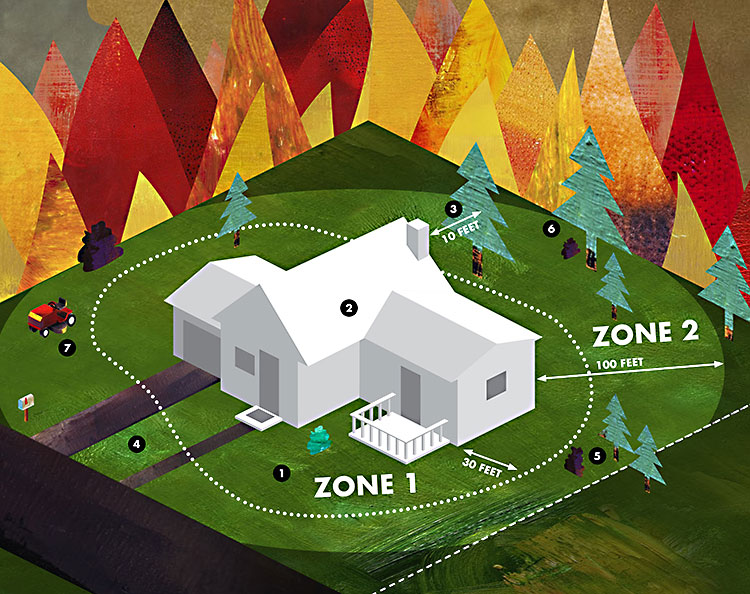By Zach Friend, Supervisor, Second District
With our extremely dry winter comes the increased risk of a serious fire season. There are some things you can do to help protect your home or business from a wildfire or a structure fire.
Recently, our office co-hosted a community preparedness meeting with representatives from the County’s new Office of Response, Recovery and Resilience (OR3) and County/Cal Fire to discuss ways to keep your home safe. Here are some general tips to get started.
 One of the first things is to ensure you have a home emergency plan (and evacuation plan) and practice it with your family. All homes should have working smoke and carbon monoxide alarms and at least one ABC-rated fire extinguisher in your home. You can sign up for emergency notices, such as Code Red at www.scr911.org to learn about possible evacuations or changes in conditions.
One of the first things is to ensure you have a home emergency plan (and evacuation plan) and practice it with your family. All homes should have working smoke and carbon monoxide alarms and at least one ABC-rated fire extinguisher in your home. You can sign up for emergency notices, such as Code Red at www.scr911.org to learn about possible evacuations or changes in conditions.
Ensuring the Fire Department can respond quickly also means having visible address numbers on the outside of your home and business (and if you have a sidewalk — along the curb).
All homes should be kept clear of combustible debris such as cardboard boxes, rags, paper products, flammable liquids and fireplaces and wood stoves should be maintained and cleaned and inspected annually.
The topography of Santa Cruz County, and location of homes within the rural areas, means it’s imperative to create a defensible space around your home.
Defensible space is the buffer you create between your home or business and the vegetation that surrounds them to prevent these structures from catching fire.
The defensible space can reduce risk to both your home (from fire directly or radiant heat associated with fire) as well as to firefighters using the space to defend your property.
How do you create a defensible space?
California State law requires that you maintain 100 feet of defensible space around your home and other buildings on your property. This is a minimum recommended amount and should be increased if your home is on a steep slope. You can create a defensible space by ensuring that trees are the furthest from your home and that elements that are less likely to burn (or burn at lower temperatures) such as lawns, small plants/beddings/high water content plants are closer to the home.
For the first 30 feet from all buildings, decks and structures you should:
- Remove or mow all dead plants, grass, or weeds.
- Create paved or gravel driveways, walkways, patios as firebreaks
- Remove dead or dry leaves and needles from yard, roof, and gutters.
- Trim trees regularly and maintain a minimum of 10’ between canopies.
- Remove branches that overhang your roof and any dead branches close to chimney.
- Remove flammable items near any structure
For the next 70+ feet from your home (extending to at least 100 feet from your home) you should:
- Cut or mow annual grass down to a maximum height of 4”
- Maintain 10 foot clearance around woodpiles
- Thin trees and shrubs and leave big gaps between plants
- Remove dead or dry leaves, needles, twigs, bark, cones, and branches from ground.
How can you get more information?
The Central Fire Protection District website — www.centralfiresc.org — contains preparedness information on defensible space, general fire prevention and even the power shutoffs that have occurred.
Fire Safe Santa Cruz County also maintains a comprehensive site with downloadable fact sheets and videos on how to prepare your home or business www.firesafesantacruz.org.
Lastly, the County’s OR3 website has a resources link with a lot of valuable information: https://www.co.santa-cruz.ca.us/OR3.aspx
•••
As always, I appreciate any feedback you may have on this (or any other County issue). I’m maintaining regular updates on social media at www.facebook.com/supervisorfriend and you can always call me at 454-2200.


